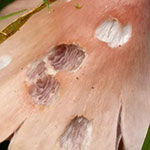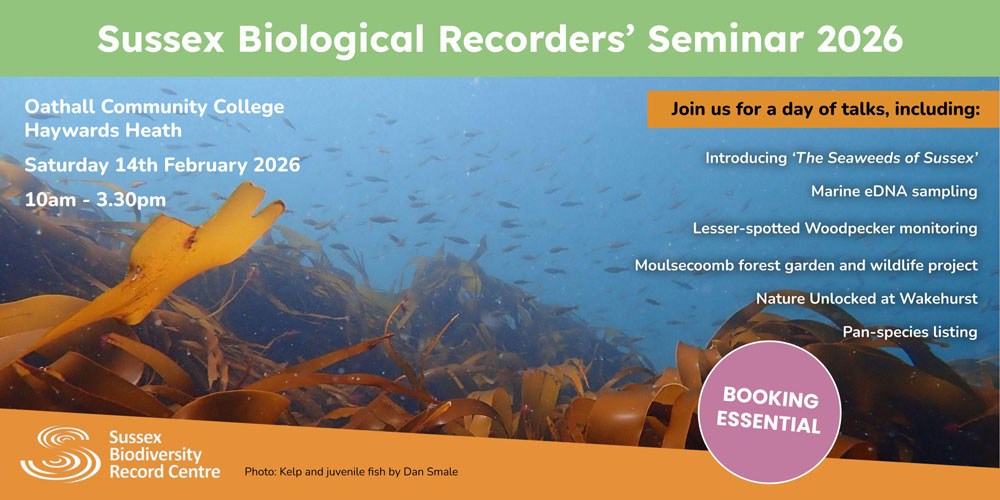


You may know the Pink Waxcap Porpolomopsis calyptriformis by its other common name: ‘the ballerina’. It is classified as ‘vulnerable’ on the IUCN Red List with a decreasing population trend.
Welcome to the website of the Sussex Biodiversity Record Centre, one of the many local environmental record centres situated around the UK. We provide environmental information services encompassing biodiversity, geodiversity and other aspects of Sussex’s natural capital. We cover the two counties of East and West Sussex, including Brighton & Hove, in South East England. We are a small but dedicated team of environmental data managers, naturalists and IT specialists.
The Sussex Biodiversity Record Centre is managed as a partnership project, hosted by the Sussex Wildlife Trust. Our partners include local planning authorities, government agencies, conservation bodies and other organisations which need access to up-to-date biodiversity information, such as water companies.
Sussex has a vibrant and energetic biological recording community with many independent recording groups and societies. By strengthening relationships with these groups, and the wider network of naturalists, ecologists and recording schemes active in Sussex, the Record Centre facilitates sharing of ever-greater amounts of biodiversity data.

You may know the Pink Waxcap Porpolomopsis calyptriformis by its other common name: ‘the ballerina’. It is classified as ‘vulnerable’ on the IUCN Red List with a decreasing population trend.
18 December 2025

Date: Saturday, 14th February 2026
Time: 10:00am - 3:00pm
Venue: Oathall Community College, Appledore Gardens, Haywards Heath, RH16 2AQ
Join Sussex Biodiversity Record Centre on the 14th February 2026 for the 35th annual Sussex Biological Recorders’ Seminar, at our usual venue Oathall Community College. The Sussex Biological Recorders’ Seminar provides a unique opportunity to meet other people from Sussex’s wildlife recording groups, natural history societies and local conservation groups.
As well as talks, we also invite groups and recording schemes to bring a display and showcase their work around the hall, where you may find books and identification guides for sale. This is a great way to get involved with local community groups and network with other recording groups. There are also updates on atlas projects from Sussex recording groups and a short slot for anyone to advertise projects and initiatives to attendees before lunch.
This year’s talks will include:
Catering
Again we welcome back Seven Sisters Spices who will provide a delicious vegetarian buffet or you can bring your own lunch if you prefer. If you have any dietary requirements please make sure to let us know during the checkout process. Light refreshments will be available.
Display stands
You are welcome to bring a stand for your organisation or group. Please make sure this is booked during the checkout process.
Travelling to the venue
There is ample parking on-site. Oathall Community College is a 12 minute walk from Haywards Heath rail station. The nearest bus stop is Summerhill Lane. There is also a covered bike rack for bicycles.
Accessibility
There is level access to the hall and an accessible toilet in an adjacent building. If you have any specific accessibility needs or questions please get in touch. If you require a carer we are offering them free entry. Please just add a carer ticket to your order.
If you have any issues with your booking, or would like more information about the event, please contact sxbrc@sussexwt.org.uk or phone on 01273 497557
We hope to see you there!